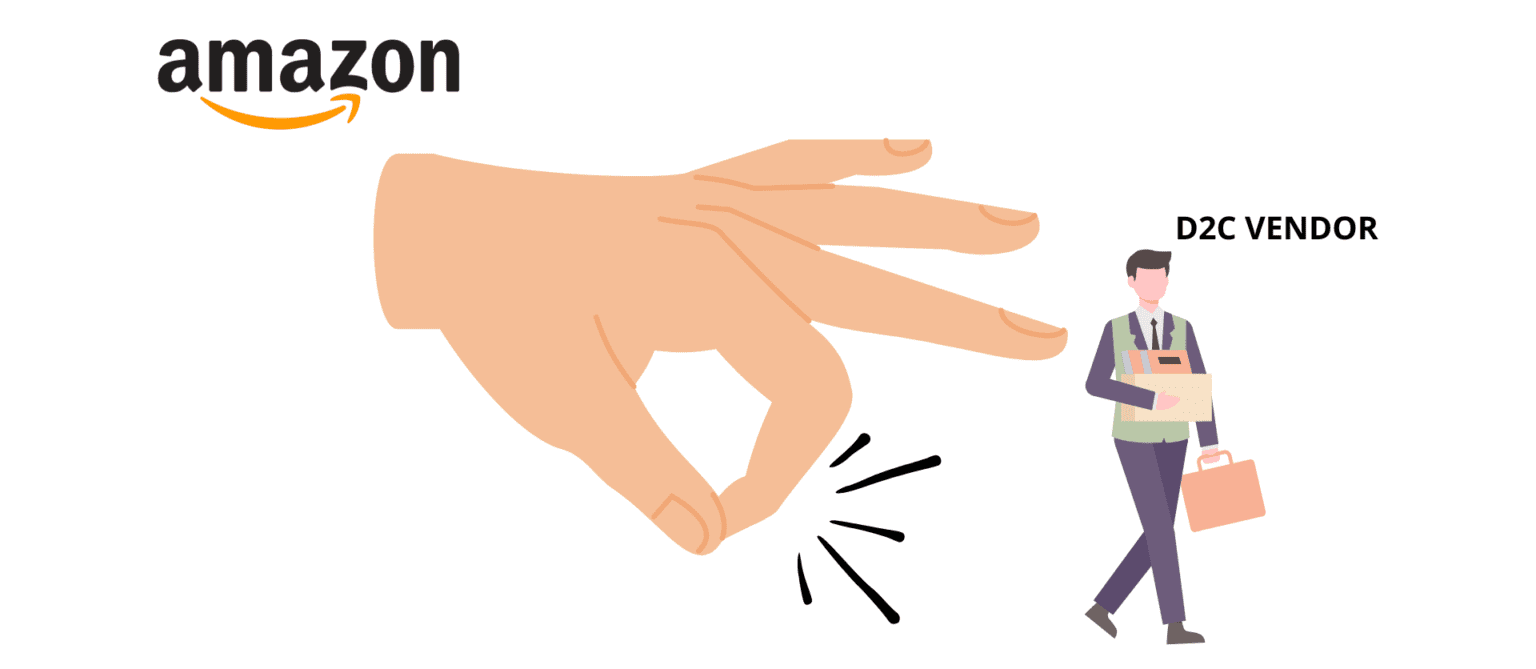Recently, Amazon implemented significant changes in its Vendor program, notifying many vendors of the termination of Vendor Central accounts.
This decision prompted many brands to confront the need to adopt the Seller model to continue selling on the platform.
Although it may initially seem like a problem, the transition from Vendor to Seller offers multiple benefits, such as greater control over sales strategy and brand management.
In this article we explore why Amazon is closing Vendor accounts, what the transition entails, and how best to prepare for it. Finally, we explore how Yocabe can simplify this transition, helping brands overcome operational and fiscal challenges.
Why is Amazon Closing Vendor Accounts?
Amazon is streamlining its operations, focusing on the most strategic and profitable vendors. The closure of vendor accounts is part of a broader policy to optimize the platform and reduce costs.
According to an analysis by Marketplace Universe, Amazon is restructuring its procurement model to:
- Reducing operational complexity: Cutting less strategic suppliers.
- Promoting the Seller Central model: Transferring more responsibilities to sellers, such as logistics, pricing, and catalog management.
- Increasing profit margins: Eliminating purchasing and management costs associated with the Vendor model.
This strategy also offers benefits to vendors, such as more direct control over pricing, but it requires a significant change in how they operate.

What to Do When Your Vendor Account is Closed: opening an Amazon Seller account
1. Analyze the Impact on Business.
- Evaluate the weight of Amazon sales in your overall revenue.
- Identifies the best performing products and studies how to replicate their success with the Seller model.
2. Consider the Seller Model
Moving from Vendor to Seller means taking direct control of sales, but also facing new responsibilities. This change entails:
- Direct management of product catalog and content.
- Greater involvement in logistics, unless using FBA (Fulfillment by Amazon).
- Independent management of customer service.
3. Rely on an Expert Partner
The transition can be complex, especially for companies that are not very structured internally, perhaps with large catalogs and already established operations. Working with a partner like Yocabé allows you to delegate operational, fiscal and logistical management, reducing startup time and associated risks.

Opening an Amazon Seller Account: How to Prepare for the Transition from Vendor to Seller
The transition requires careful planning. Here are the main aspects to consider:
1. Assessing Internal Resources.
- Do you have a team with expertise in e-commerce and logistics?
- Are you ready to manage catalogs and promotions on your own?
2. Study the Market.
Analyze competitors already operating as a Seller on Amazon. Identify their pricing and promotion strategies, and identify opportunities to differentiate yourself.
3. Forming the Team
If you decide to manage the Seller account yourself, your team must acquire specific skills to:
- Optimize the content of catalogs.
- Managing customer service.
- Planning promotional campaigns.
Amazon Seller: Advantages and Disadvantages of the Selling Model
Advantages:
- Complete control: you can directly manage prices, promotions and content.
- Increased flexibility: you have full autonomy in sales strategy.
- Data access: You can analyze product performance and customer behavior.
Disadvantages:
- Increased operational load: you have to manage logistics, shipping and returns.
- Fiscal Responsibility: You are directly responsible for tax compliance in the markets in which you sell.
- Variable commissions: Amazon’s sales commissions depend on product category.
Creating an Amazon Seller Account: An Operational Challenge
Opening a Seller account on Amazon is a process that, while seemingly simple, requires a significant commitment of resources and expertise. It is not just a matter of registering, but of setting up a large-scale business operation that can compete effectively in the world’s most competitive marketplace.
Amazon Seller Accounts: A Strategic and Technical Operation.
Setting up a Seller account is not only a technical step, but also a strategic one:
- Documentation: Amazon requires verification of business, tax and banking data.
- Catalog optimization: Creating a high-performing catalog with appealing descriptions, quality images and competitive pricing is critical to success.
- International compliance: If you want to sell in more than one country, you need to handle tax regulations, translations, and shipping, all while complying with marketplace rules.
- Operations management: From logistics to customer care, every stage of the sale is your responsibility.
Effort vs. Opportunity
Even for those with prior e-commerce experience, managing a Seller account requires time, resources and constant attention to detail. Any mistakes can result in delays, penalties and lost sales opportunities.
Why Rely on Yocabe: The Complete Solution for the Transition to Seller
Dealing with managing a Seller account on Amazon is not only an operational challenge, but also a significant fiscal and regulatory commitment. With Yocabé, companies can overcome these complexities and focus on their core business, relying on an experienced partner to manage every aspect of selling on Amazon.
Yocabe: More than an Operating Partner
Yocabé not only simplifies the operational management of an account Seller, but also takes care of all tax, regulatory, and international compliance aspects, providing 360-degree support.
Here’s how we help you:
- International tax management:
We handle tax compliance in all markets where you want to sell, including VAT registration, issuing invoices, and complying with local regulations. - Operational simplification:
Use our already optimized Seller account, avoiding lengthy bureaucratic and technical procedures. - Optimized multilingual catalogs:
We create ready-made catalogs for every market, with engaging and localized content. - Agile Logistics:
With our SmartLogistics system, you avoid moving all your inventory to warehouses, ensuring fast and convenient shipments. - Always competitive pricing:
Our SmartPricing algorithms find the best balance between supply and demand, protecting your margins.
The Yocabe Solution: Comprehensive and Optimized Management
- Zero operational thinking: From product posting to returns management, we handle everything for you.
- Reduction of tax risks: With Yocabe, you are always in compliance without having to go through complex tax registration processes in different countries.
- Immediate market access: Our established Seller account allows you to start selling right away, without wasting time.
Conclusion: Turn a Challenge into an Opportunity
Amazon’s closure of vendor accounts should not be seen as a hindrance, but as an opportunity to optimize your strategy and strengthen your online presence.




